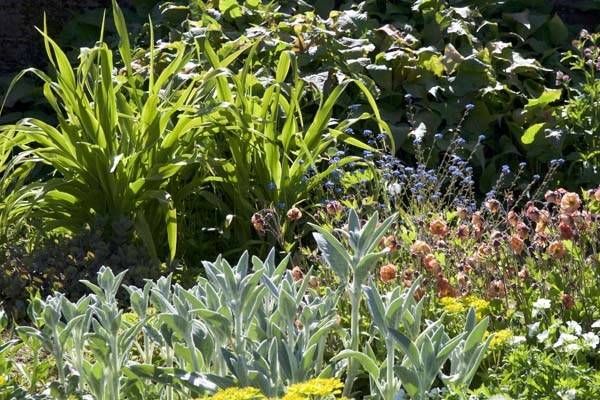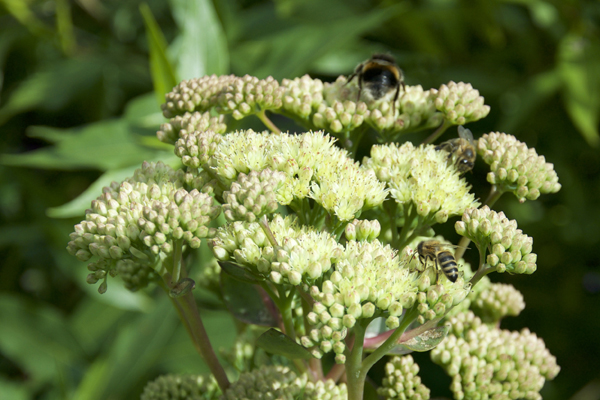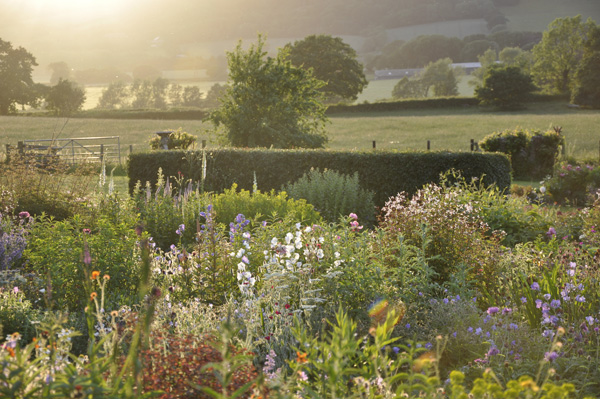Salvia
Salvias can be the most useful hardy plants to use in a border of mixed perennials. Loved by bees and all flying insects, they belong to a family more commonly known as Sage, to which the herb Rosemary has been added recently.
Salvia Flowers And Leaves
The flowers are similar in formation. Each small bloom has a longer upper petal that creates a cover above the lower petals, which provide a landing pad for insects to explore for nector. The flower colours can be bright or retiring and include white, yellow, pink, red, purple with blue the most common colour. The blooms appear from bracts that can be as decorative as the flowers. Sometimes they sit so close to each other they form dense spikes, while varieties with slightly large blooms tend to be spaced up the stiff, rather woody stems. Each stem, which is square in profile, bears some leaves. These tend to be coated with hairs, some so thickly that the leaves feel like felt. Very often they are scented. Among the Salvias we grow, only Salvia officinalis (Culinary sage) is evergreen.


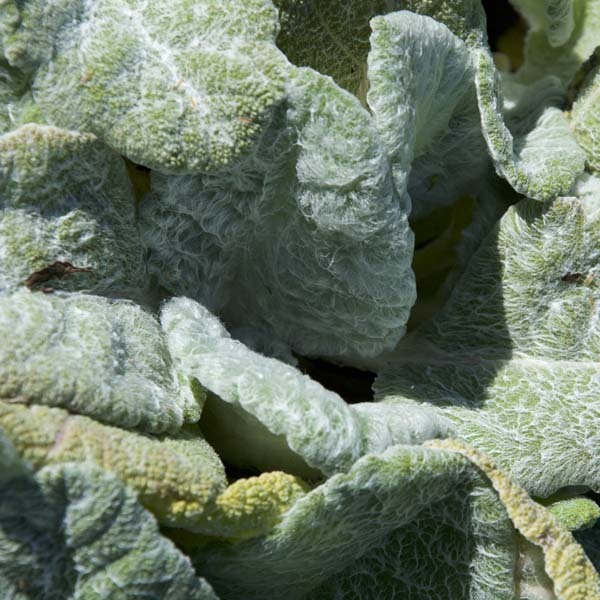
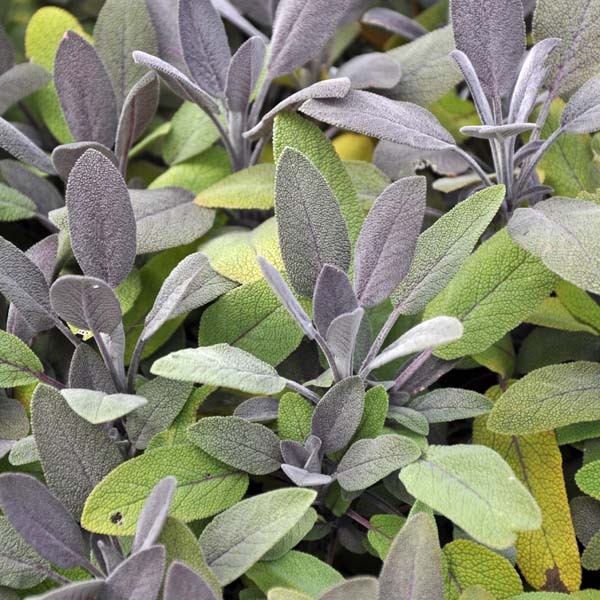
Above: Salvia 'Hot Lips', Salvia x sylvestris 'Mainacht', Salvia argentea, Salvia officinalis
Salvia Plant Shape
Salvias grow in a number of different ways. Some create short, round clumps, others form upright, airy bushes, while more tender forms make twiggy bushes. In height they range from around 45cm right up to 120cm.

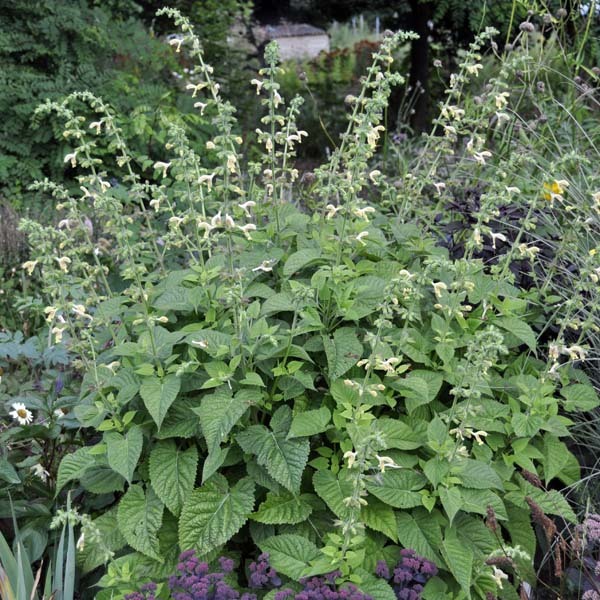
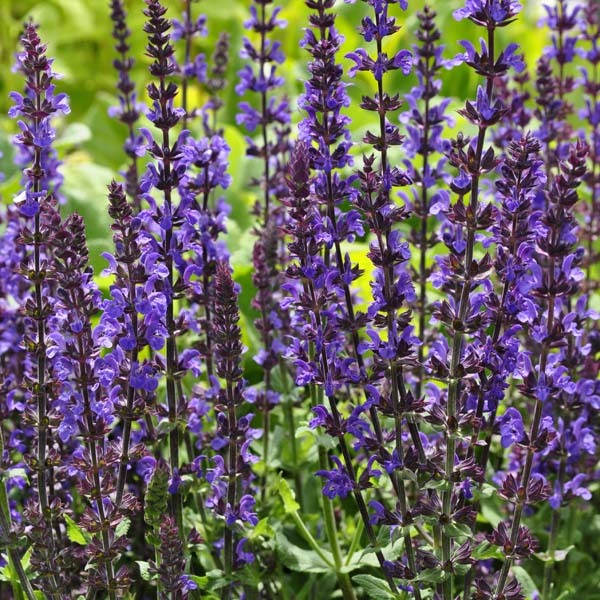
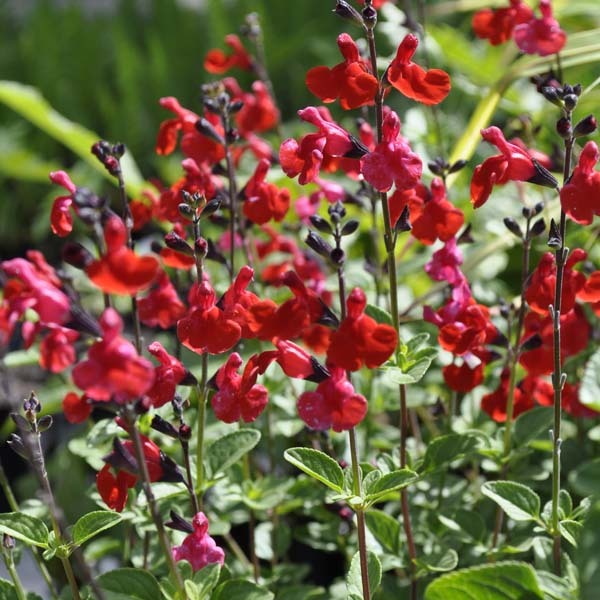
Above: Upright clumping Salvia nemorosa 'Amethyst', bushy clump of Salvia glutinosa, short mounding Salvia x superba, Salvia 'Royal Bumble' forms twiggy bush
Growing Salvia
The majority of Salvia require a soil that is very free-draining. If the soil stays wet for any length of time the majority of Salvias simply disappear after few years. However, I have discovered Salvia forsskaolii, Salvia glutinosa and Salvia verticilata are happy in our rather wet clay loam, and have been so for quite a number of years. In fact Salvia glutinosa seeds around the garden. The other requirement is as much sun as possible especially for what I consider to the the more tender types.

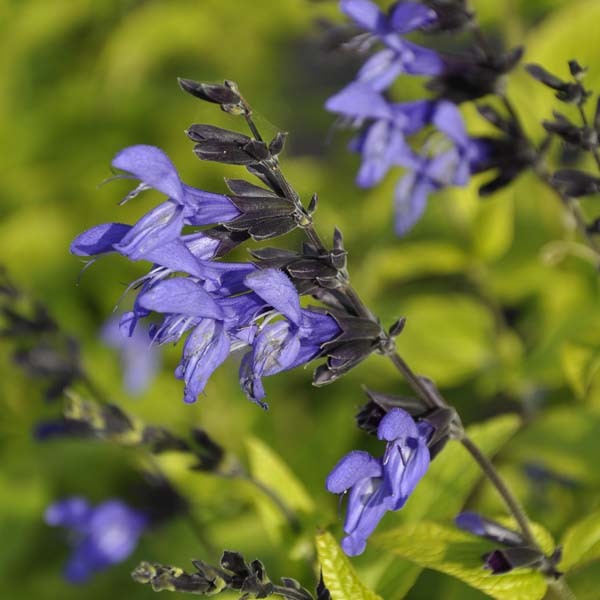
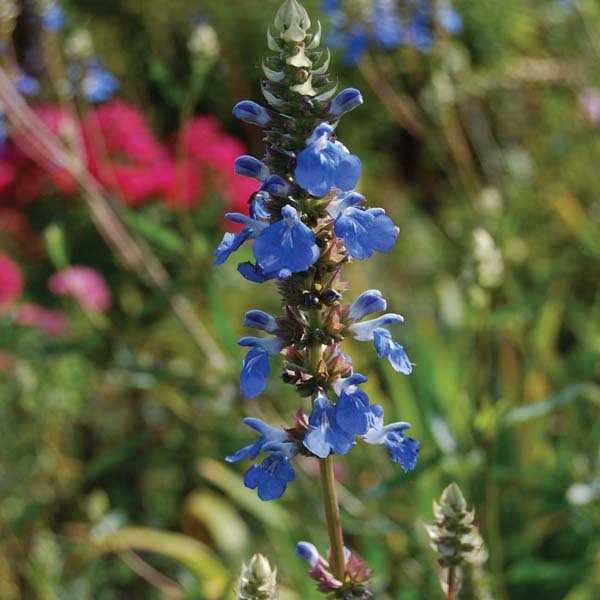

Above: Hardy Salvia verticillata 'Purple Rain', tender Salvia guaranitica 'Black and Blue' and Salvia uliginosa, Salvia nemorosa 'Pink Friesland' likes free-draining soil.
Are Salvias Hardy?
I have found that Salvias which originate from South America are not hardy. This includes popular Salvia 'Amistad' - I've seen looking fabulous in a pot in London - as are types of S. greggii, S. guaranitica and Salvia uliginosa. If the temperature drops below -5 in winter the plant will not survive. Likewise if the ground stays wet throughout winter, Salvias suffer. If you want to grow the more tender types, it is best to take cutting in late summer. Simply take a non-flowering cutting between 5 to 8cm long. Remove the lower leaves and gently push the cutting in to a pot of compost so that the junction where the leaves were is in the soil. Dipping the bottom of the stem in rooting powder aids root growth, but it not essential. I have found the hardiest types to be those of Salvia nemerosa, Salvia x sylvestris and Salvia verticillata.




Above: Clump forming Salvia verticillata 'Hannay's Blue', upright Salvia 'Caradonna', mounding Salvia x sylvestris 'Schneehugel' and Salvia x sylvestris 'Blauhugel'
Where to grow Salvia
Salvias that grow into round clumps and those that are bushy but upright blend wonderfully with most perennials but especially those with large leaves as they compliment each other. Most are ideal for the front of a border, but some such as Salvia 'Caradonna' (which can be short-lived in heavier soil) can sit further back in a border. More tender types of South American origin are perfect for pots as the pots can be placed in a green house over winter, thus avoiding extreme wet weather.
